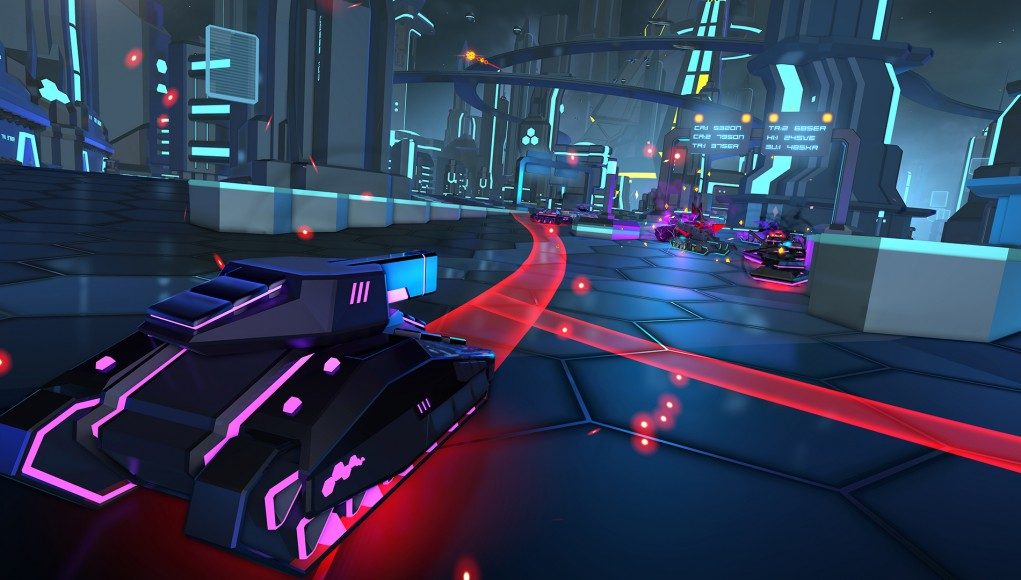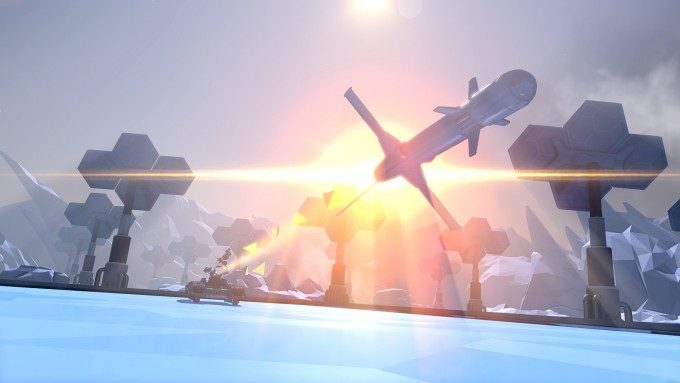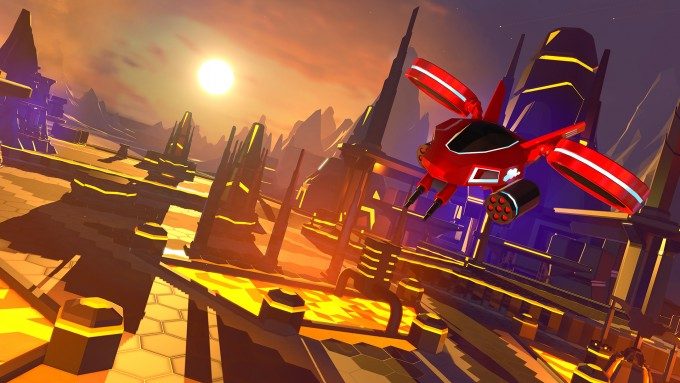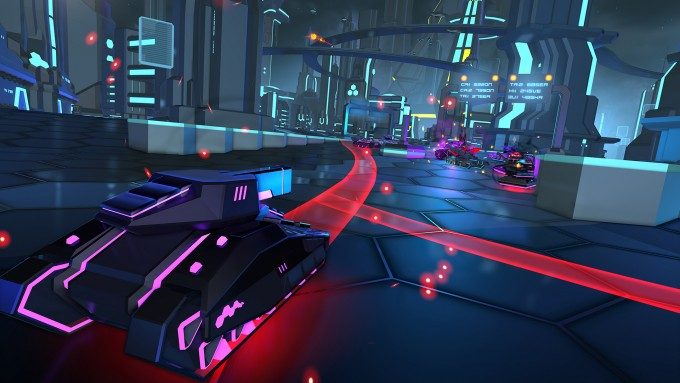In our final developer diary from the team behind Rebellion’s PlayStation VR launch title Battlezone, Lead Artist on Sun He reflects on how they developed and executed on the artistic ethos behind the game.
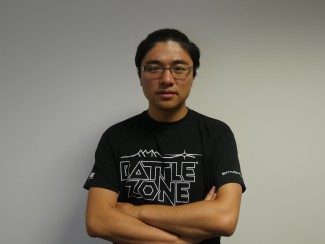
As an art team beginning work on our very first VR game, we knew we were undertaking a challenge with Battlezone, but our goals were always crystal clear. We wanted to fashion an art style that not only wowed in VR, but also retained a strong visual connection to the original 1980s arcade game. A simple goal to understand then, but very complex to deliver! Here’s how we approached it, and the lessons we learned along the way:
1. Rethink the workflow
At the earliest stages of production we conceptualized the game’s look the traditional way.
Metaphorically, we knew we weren’t about to paint on canvas, but we still tried sketching out ideas on paper. Sure enough, this traditional approach produced results that looked rather different in VR compared to how we imagined.
It quickly became clear just how important it was to consider the scale and spacing in VR as early as possible. In VR, artists are working in a truly digital world. In other words, that meant conceptualizing in 3D and indeed in VR right from the off.
The best allegory for this shift I can come up with is that whereas before VR we were artists making nice paintings of houses, we are now actually building the houses and designing their interiors! It’s quite a jump.
We’d take 3D concept models into VR and scale them, move them around in the 3D space and test them again in again in as many different scenarios as possible, essentially trying to break them! Once an outline was set, we could then finally add detail and texturing.
Special effects were a particularly good example of this. In a traditional approach we would simply generate effects with 2D sprites, but in VR this led to effects that lacked an inherent sense of depth and volume. This, interestingly, was particularly noticeable with larger particles.
If you play Battlezone, you’ll notice a lot of the game has a polygonal feel, from the hexes of the campaign map and the in-game surfaces to the polyhedral pieces of data that spawn from defeated enemies. This is certainly part of the game’s retro-futuristic feel. But with our effects, using a polygonal design allowed us to create effects in 3D meshes. By this I mean instead of drawing a 3D sphere, for example, as a texture to put on 2D particle sprites to create what looks like a sphere in-game, you’re actually using a 3D sphere. And you can see that particularly in the explosions: Bright yellow and orange dynamic polygons that look like lots of smaller shapes combined together. It’s a striking look that really resonates with the retro style but is also very well suited for VR art design.
2. Exaggerate the scale
Creating a game for VR, we of course wanted to create a world that people would naturally look around. One of the ways we tried to achieve this is something we’ve mentioned in a previous post: Using very tall, imposing structures in the vertical space that really hammer home the sense of scale. These work both as visual landmarks and orientation tools in VR, much like you’d use the tallest building as a point of reference in a busy metropolis.
In addition to this, we used a combination of “vanishing points” in scenery to make perspectives feel more exaggerated. A vanishing point is, essentially, the point in your perspective where two parallel lines appear to converge. Try imagining a picture of a road leading to the horizon. At some point you see the two sides of the road meet towards the horizon, essentially disappearing. That’s a simple example of a vanishing point, though it can comprise more than just lines, and it’s often used to simulate 3D in 2D art.
By using multiple vanishing points in the Battlezone scenery, we were able to make our 3D perspectives feel more exaggerated in scale; structures would feel taller and environments even bigger. For instance, during the opening launch sequence, the hangar feels incredibly spacious in VR because we’ve exaggerated the draw distance. And then as the tank lifts you out of the level, your eyes are drawn upwards towards that epic landmark in the sky.
3. Design a VR-friendly art style
I’d probably describe Battlezone’s look as a retro-futuristic style with very neon, chunky and blocky shapes. We wanted to inherit some of the classic elements from the original Battlezone, like the colour, the neon wireframe and the polygonal look, but at the same time give it the kind of makeover players would expect from a next-gen VR experience
In early development, Battlezone had a litany of thin neon lines and very, very detailed environments. However, it started to look noisy, with elements a little indistinctive in the mid-to-far distance. As artists, we found we needed to be a little bit more restrained in VR.
With that in mind, we began to sculpt the buildings and vehicles into big, blocky shapes at first, and then balance things like the level of detail and the thickness of lines. Once again, we were testing assets early and regularly in VR, so we could have a much clearer idea of how much additional detail we could add.
Battlezone’s chunky neon polygons became the basis around which we chose the colour palette. We tinted environmental themes around it – the volcanic theme has primary and secondary colours of brown and grey, which really contrasted against the neon orange and yellow of things like effects to make everything more pronounced in VR. And placing our player in the cockpit meant we could bring back the game’s classic green look into the displays and user interface right at the front of the view. The end result is something that harkens back to the original arcade game and yet feels undeniably modern, digital and virtual – retro-futuristic, classic but modern, familiar and yet in VR.
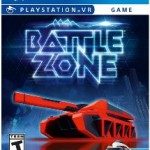
It’s been so exciting to be a part of this VR journey, and I’m looking forward to further exploring this new area of gaming and finding more solutions for future development. We are really lucky to be one of the few teams to create art content for a brand new platform in such uncharted territory. I really hope you’ll enjoy Battlezone and appreciate the work that has gone into its art style.
Our thanks to Sun He and the rest of the Rebellion team for putting together these developer diaries. Battlezone is out now on PlayStation VR.

